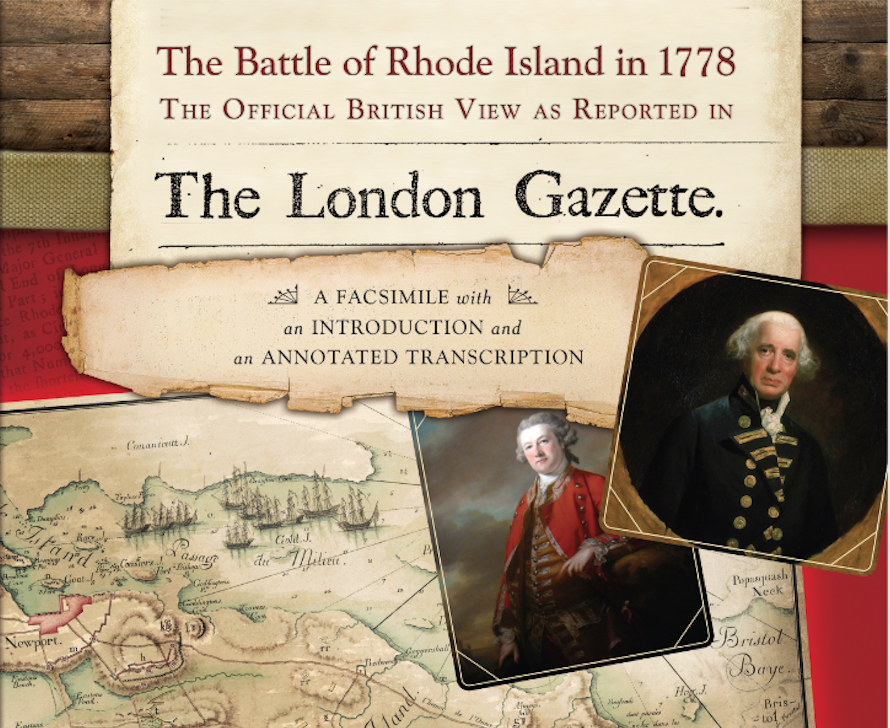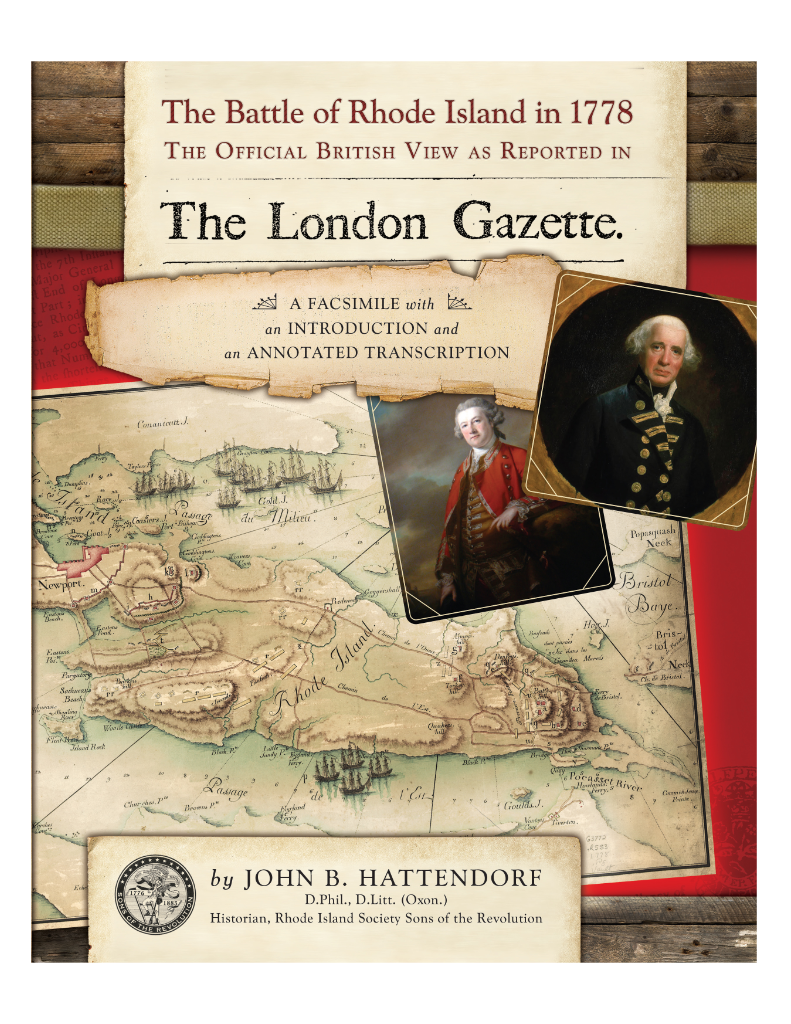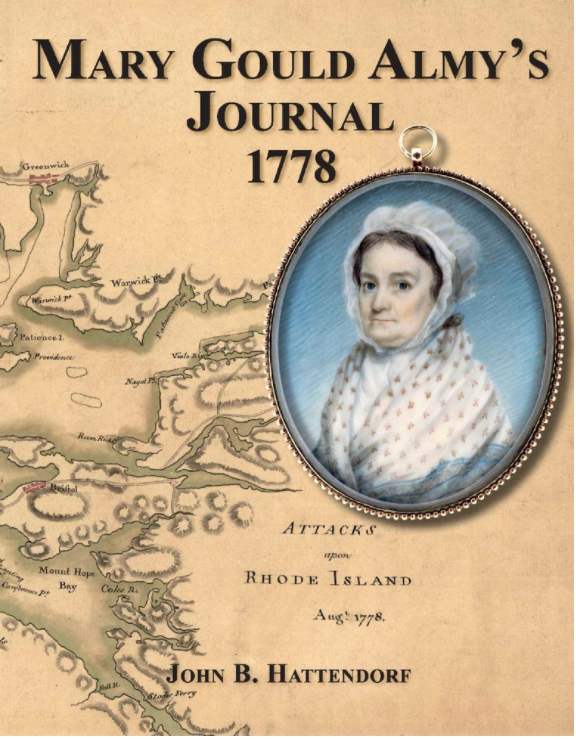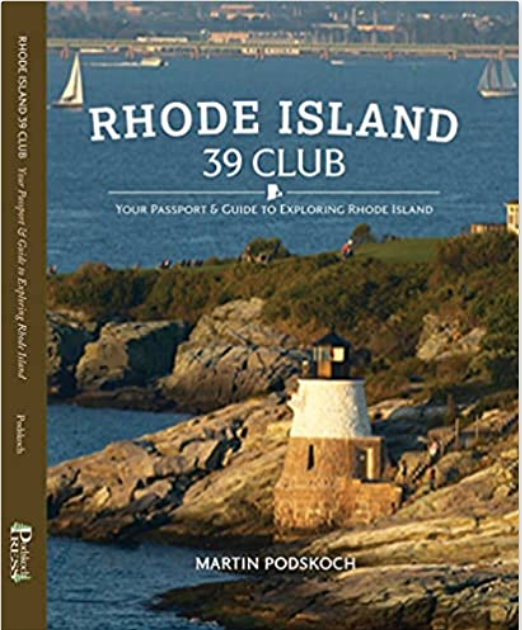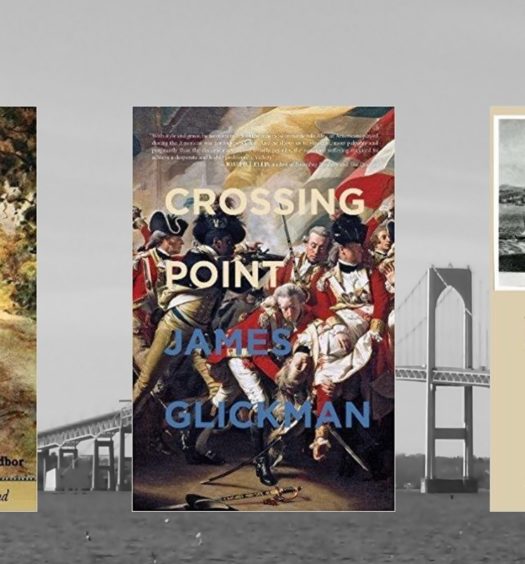Looking to round out your Christmas or other holiday gifts to that special person who enjoys reading Rhode Island history? Look no further. And each can be purchased for the reasonable price of about $21.95, or possibly less.
Highlighted here first are two attractive hardcover books published by the Rhode Island Society Sons of the Revolution and edited by the eminent international naval (and Rhode Island) historian John B. Hattendorf. Each of the books is oversized, with somewhat enlarged print, and has a colorful and attractive cover.
The Battle of Rhode Island in 1778. The Official British View as Reported in The London Gazette. Edited by John B. Hattendorf. Rhode Island Society Sons of the Revolution, 2021.
As many of you know, the Battle of Rhode Island, which occurred on August 29, 1778, in Portsmouth, was a major battle of the American Revolutionary War. After a failed joint siege of Newport by a New England army commanded by Continental Army Major General John Sullivan and a French Navy fleet commanded by the Comte d’Estaing, Sullivan had his army retreat to northern Aquidneck Island, closer to where it could depart the island to Howland’s Ferry in Tiverton. When the commander of the besieged British troops holding Newport, Major General Robert Pigot, learned of the retreat, he ordered elements of his British troops to march up East Main Road and elements of his German allied and Loyalist troops to march up West Main Road., both to attack the Americans.
As detailed in my book, The Rhode Island Campaign, the First French and American Joint Operation in the Revolutionary War (Westholme, 2011), American troops on East Main Road fought courageously against British regular troops, at one point even performing an effective ambush, and at another point charging British troops who had seized a cannon. Eventually, the overwhelming British numbers pushed back the American defenders to their main lines east of Fort Butts at Butts Hill. The American defensive line held and prevented further British advances. On West Main Road, after small advance American forces performed some brave delaying actions, German and Loyalist regulars came upon American defenses west of Fort Butts, with the famous “Black Regiment” (the newly-reformed First Rhode Island Continental Regiment), consisting of formerly enslaved men, Indians and other persons of color, defending the advanced redoubt. The American defenders here, including the Black Regiment, repulsed three charges by enemy troops. In the early morning of the next day, Rhode Island boatmen ferried Sullivan’s troops across the Sakonnet River to the safety of Tiverton.
If you don’t want to read my 230-page book about the naval campaign, siege, and battle, John Hattendorf’s new book is a great alternative. First, Hattendorf has penned an excellent summary of the campaign and the battle. The book then contains printed transcripts of letters written by Royal Navy and British Army commanders to officials in Britain and published in The London Gazette newspaper. The summaries provide the British view of the naval campaign, siege of Newport, and subsequent battle. The end of the book has images of the letters as they appeared in The London Gazette. For those like me, who have previously read a good bit about the campaign and battle, including The London Gazette’s letters, Hattendorf’s footnotes to the main text contain new and original material: numerous splendid mini-biographies of the British army and navy officers mentioned in the letters who served during the Rhode Island Campaign and at the Battle of Rhode Island.
Copies of this book are currently available at the Newport Historical Society’s Museum and Shop at Brick Market. The book was beautifully printed by Stone Tower Press of Newport. You can also order the book online at its website, https://stonetowerpress.com/shop/
Mary Gould Almy’s Journal 1778. During the Siege at Newport, Rhode Island, 29 July to 24 August 1778. Edited by John B. Hattendorf. Rhode Island Sons of the Revolution, 2018.
The second offering by the Rhode Island Sons of the Revolution, and its historian John B. Hattendorf, contains a printed transcription of the wartime diary of Mary Gould Almy of Newport. Mary Almy definitely had a strong character. She was the wife of Benjamin Almy, who fought on the American side during the Revolutionary War. But Mary was a firm Loyalist—a supporter of King George III and of British rule in North America. During the British occupation of Newport, from December 1776 to October 1779, she remained in Newport, operating a boarding house on Thames Street and caring for the couple’s children. During the siege of Newport in July and August of 1778, Mary wrote a letter to Benjamin, announcing that she was keeping a journal that “would be with spirit, for my dislike to the nation that you call your friends [that is, Patriots or Whigs] is the same as when you knew me.” After the arrival of the French Fleet off Newport Harbor, she wrote in her journal, “Cursed ought and will be the man brought all this woe and dissolution on a good People.” Presumably, she was referring to Admiral d’Estaing.
After the war, Mary and Benjamin resumed living together in matrimonial harmony at Newport. Hattendorf found a wonderful letter from Ward Chipman, who was a firm Loyalist during the Revolutionary War and stayed at Mary’s boarding house shortly after war’s end in September 1783. Chipman wrote that he “put up at Mrs. Almy’s, one of the most . . . companionable, civil, good natured, jolly, and well-bred ladies I have ever met with.” But Chipman did not like her Patriot husband, Benjamin, describing him as “too much of a Cypher in the house to be called the Landlord.” But Mary and Benjamin loved each other. When Mary died at Newport at the age of 72, her death notice in the Newport Mercury, printed in Hattendorf’s introduction, states in part, “she is deeply lamented by her husband” who was “overwhelmed with sorrow” and suffered “in being deprived in an advanced age of so valuable an associate, with whom he had lived almost fifty years . . . . ”
The book leads with an excellent introduction to the life of Mary Gould Almy and the history of the Boarding house that she kept, known as the Jahleel Brenton Townhouse. The introduction also gives the history of other published versions of Mary Almy’s diary, which is a useful resource for historians of the Rhode Island Campaign.
The book’s cover includes a color portrait of Mary by the great Newport portrait painter Edward Green Malbone, painted at some point between 1797 and 1800. This marvelous miniature is held by the Fine Arts Museum in Houston, Texas. I never knew it existed.
John Adams of the Rhode Island Sons of the Revolution kindly sent me a copy of this book in 2018 and I called him to thank him for it. John explained that John Hattendorf insisted that images of Mary Almy’s actual journal pages be included in the book. He won the argument. So on the left side of the book’s pages are presented images of the actual diary pages, and on the right side are Hattendorf’s printed transcriptions. For both reasons (the images and Hattendorf as transcriber), we can be assured that this is the most accurate version of Mary Almy’s journal in print. In fact, this accurate version is alarmingly different in many places compared to the previously published versions from the late 19th century when standards of transcription were much looser. (This should serve as a warning to all historians). It also explains why the book is oversized (which is expensive to do, though the book’s price does not reflect it). Happily, the Sons of the Revolution decided to keep with the oversize book approach with its most recent book containing the London Gazette letters.
I learned that John Hattendorf is doing yet another book that will be a transcription from the same approximate time period. I eagerly look forward to it and congratulate the Rhode Island Sons of the Revolution for funding these valuable works.
Hattendorf did not include in his book my discovery that apparently Mary Almy hosted meetings of Loyalist spies at her boarding house during the occupation of Newport by the French allies commencing in July 1780. I gained this knowledge from an intelligence report, dated August 23, 1780, probably made by a French officer, found in the papers of Major General William Heath of Massachusetts, who commanded American troops on the island. I printed the report in my Spies in Revolutionary Rhode Island book. Mary was quite a lady!
Copies of the book can be purchased online at amazon.com, but there are only a few copies left. You can also order a copy from the printer, BookBaby, of Pennsauken Township New Jersey, at https://store.bookbaby.com/book/mary-gould-almys-journal,-1778
Rhode Island 39 Club: Your Passport and Guide to Exploring Rhode Island. By Martin Podskoch. Podskoch Press, 2021.
Martin Podskoch hit the Rhode Island history scene with a fine book published in late 2020 and early in 2021, Rhode Island Civilian Conservation Corps Camps (which I reviewed in an earlier smallstatebighistory.com article at http://smallstatebighistory.com/three-rhode-island-history-books-for-your-consideration/). He had previously done books on CCC camps in Connecticut and the Adirondack Mountains. It turns out Marty also is a travel writer, and has done travel books for Connecticut and the Adirondacks as well.
Now, later in 2021, Martin has done a travel book highlighting Rhode Island’s towns and histories. Marty asked me to write a Forward to the book, and here is my effort:
This is a wonderful idea for a book that all Rhode Islanders and visitors can enjoy.
There is a saying that all politics is local. The same can be said of history: all history is local. The great stories and sites of Rhode Island’s amazing history over the centuries begin at the local level. That is certainly the premise of this book, the brainchild of Marty Podskoch.
Each chapter in this book is devoted to one of Rhode Island’s five counties. Within each county, subchapters are devoted to each town.
For each of the state’s 39 towns, the town’s unique history is first summarized. Then the town’s main historical sites are provided. Next some of the town’s up-to-date highlights to visit are described, including parks, hiking and biking paths, museums, bookstores, coffee houses, restaurants, and more.
A key to the book is that the author for each town is a town expert. Many are members of the town’s or other local historical societies, librarians, and chambers of commerce members. Who knows the history and highlights of the town better than them? For example, who knows North Kingstown better than its official historian, Tim Cranston?
What comes through from reading the town entries is the incredible scope of history that Rhode Island has experienced, starting with the times before white settlers arrived in the sixteenth century, when the Narragansett and other tribes dominated the lands, through to the state’s great contributions in World War II. The variety of the settings are also impressive, from rural towns to coastal communities to small and big cities. In addition, the diversity of the state’s immigrants is reflected in the wide variety of restaurant offerings.
How is this for a catchy opening from Paul Alexander: “Providence is a jewel: its architecture, art, food, drink, theater, music, sports, and history are all top-drawer, which makes the city a lively and livable place to be.” Is it time to rediscover the state’s capital?
This book is perfect for when a reader wants to an introduction to discover a town. The reader should just pick up the book, start driving, and when arrived at the town, follow the book’s recommendations!
This book is available for purchase at a number of locations across Rhode Island, including at Wakefield Books at Wakefield Mall.
*************
Finally, I want to give a shout-out to a fine book, Valor and Courage: The Story of the USS Block Island Escort Carriers in World War II (University of Alabama Press, 2021), by Benjamin J. Hruska. This book tells the story of the USS Block Island, a small aircraft carrier known as an escort carrier, which were vital in winning the War in the Atlantic against German U-boats in World War II. I found this book to be the best book I have read on the details of aircraft carriers fighting against German submarines. Tragically, the USS Block Island was sunk by a U-boat off the coast of North Africa, with the loss of life. It was the only escort carrier sunk during the war in the Atlantic Theatre. The U.S. Navy, as it often did, named another ship after the sunken vessel, a new escort carrier, USS Block Island. Many of the surviving crew members served on that vessel. To add interest for the reader, it served in the Pacific Theatre against the Japanese. While neither of the escort carriers visited Block Island or Rhode Island, many other escort carriers did visit Narragansett Bay during the war to be repaired at Newport and have their aircraft maintained at Quonset Point (as explained in our World War II Rhode Island book, of which I am a co-author).

